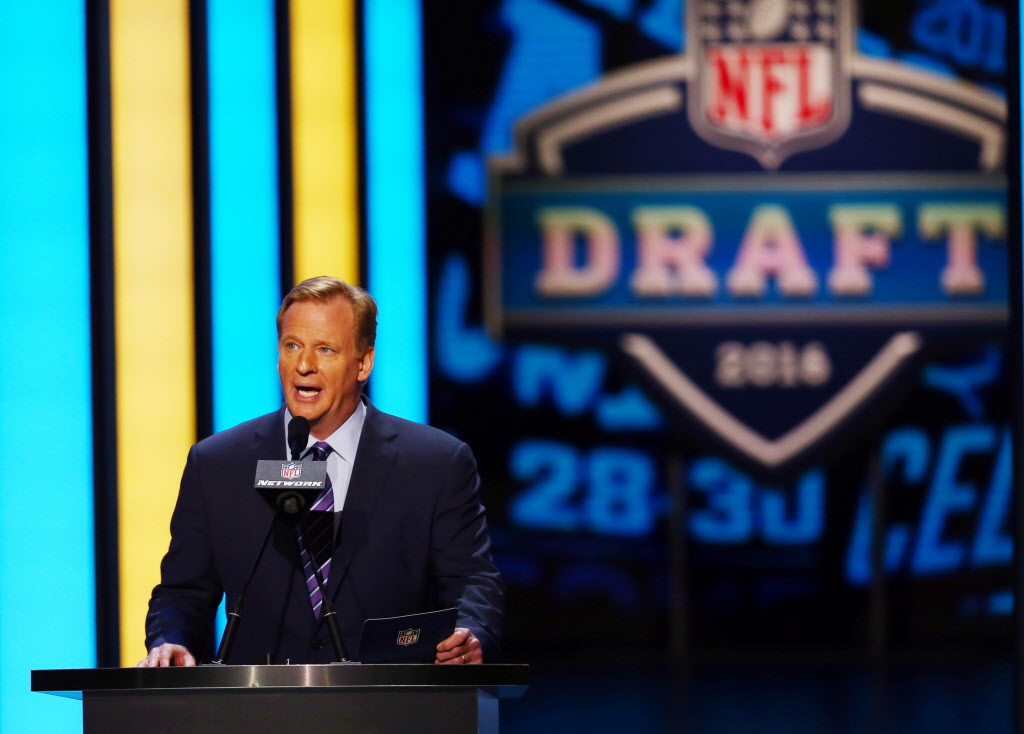Corrections and Clarifications: An earlier version of this editorial mischaracterized participation in organized tackle football for ages 6 to 14. Participation dipped in 2014 but rebounded in 2015.
By the time the NFL draft ends Saturday, more than 250 young men will have been ushered into pro football with hugs from the commissioner and the promise of riches, fame and perhaps even a Super Bowl ring. They’ll be able to do what they love and make enormous sums doing it.
Even so, one issue clouds their bright futures — and the future of the NFL: the potential for life-altering changes to their brains.
![ourview042716 [interactivepoll : 83603250]](/Portals/_default/Skins/PrestoLegacy/CommonCss/images/interactive.jpg)
Evidence has been mounting for more than a decade, in laboratories and in real-life tragedies, that successive exposure to head hits is linked to a degenerative brain disease called chronic traumatic encephalopathy, or CTE. The most convincing science comes from researchers at Boston University School of Medicine and the Veterans Affairs Boston Healthcare System, who have found CTE in 88 of 92 of the deceased former NFL players studied.
Human tragedies — the suicides of Hall of Fame linebacker Junior Seau in 2012 and former Chicago Bears safety Dave Duerson in 2011 —– have driven home the devastation that CTE can cause. The symptoms, which include depression and memory loss, often mimic dementia and Alzheimer’s but can strike men in their prime.
Researchers confirmed that Seau, 43, and Duerson, 50, both had CTE.
![NFL: We’re making football safer [oembed : 83622716] [oembed : 83622716] [oembed : 83622716] [oembed : 83622716] [oembed : 83622716] [oembed : 83622716] [oembed : 83622716] [oembed : 83622716] [oembed : 83622716] [oembed : 83622716] [oembed : 83622716] [oembed : 83622716]](/Portals/_default/Skins/PrestoLegacy/CommonCss/images/smartembed.png)
After fighting reality for years, the NFL has publicly admitted that football and CTE are “certainly” linked, as NFL Senior Vice President Jeff Miller did last month in congressional testimony.
To its credit, even before that admission, the league has changed rules, added medical personnel and imposed fines and even some suspensions for violent plays that might have been shrugged off just a few years ago. Under the league’s “concussion protocol,” players are no longer rushed back into games prematurely. All good.
But the focus on concussions tends to obscure the bigger picture: This disease is not just about concussions. Cumulative, unspectacular "subconcussive" hits that some players suffer day in, day out are associated with CTE. According to a Frontline report last year, 40% of players testing positive for CTE were offensive or defensive linemen, the players most likely to suffer repetitive hits.
CTE is not expected in people without a history of exposure to repetitive head trauma, and for now doctors can’t say how prevalent it is in NFL players. But research, which has found CTE in men who have played only college football and even in a few high school players, suggests what common sense does: Getting hit in the head repeatedly, especially at a young age, is hazardous to your health.
Football itself is starting to see some real-life impact. A handful of younger players, including San Francisco 49ers linebacker Chris Borland, have retired early.
Concussions, head impacts and CTE are now part of the nation's conversation. If the NFL wants to remain America's sport, it will need to fund even more research, including research that might come up with answers it doesn't like. It will need to penalize head shots even more harshly. It will have to see whether different equipment and tackling techniques can make the game safer. Ultimately, it will need to own up to the truth about the violence inherent in the game and make sure that draftees enter the league with their eyes wide open about the risks they face.
USA TODAY's editorial opinions are decided by its Editorial Board, separate from the news staff. Most editorials are coupled with an opposing view — a unique USA TODAY feature.
To read more editorials, go to the Opinion front page or sign up for the daily Opinion e-mail newsletter.


![ourview042816 [image : 83677258]](http://www.gannett-cdn.com/media/2016/04/28/USATODAY/USATODAY/635974726101019592-OURVIEW-2-.JPG)
